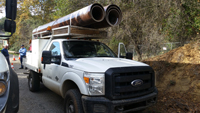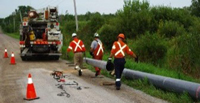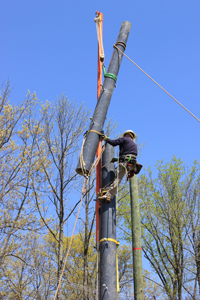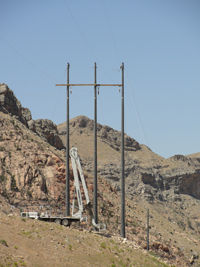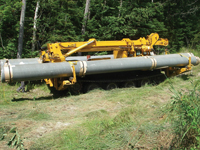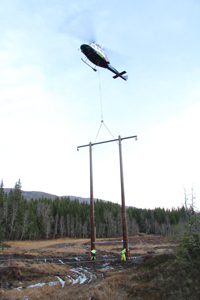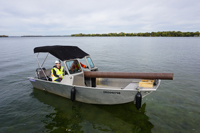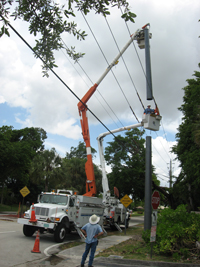Utilities will typically have an approximate average installed structure cost for a reference point across various voltage levels and structure types. In applications where the installation cost is higher than "average," RS poles can be used to reduce the labor, equipment and/or time required for installation. This results in a lower installed structure cost and, because of the typically longer service life enjoyed by composite components, reduces structure replacement frequency.
The following are examples of applications when traditional pole materials result in higher installed costs:
- Backyard. Backyard/back lot locations can result in a crane being required for installation. RS composite poles are lightweight and modular which enables the modules to be carried by hand, without heavy equipment, and to erected by hand using a gin pole. This keeps back lot installations safe.
- Transport distribution poles to site on an overhead pickup truck rack - no pole trailer required.
- The ability to hand carry pole sections.
- Install by hand using a gin pole.
-
Remote locations. Off-road locations can require an expensive road to be constructed. RS composite poles are lightweight and the modules are nested together for easier transportation, which means they can be delivered to site for a lower cost compared to long and heavy single-piece poles.
-
Wetlands. Swamps and wetlands can be challenging to access for replacement and new construction. Lightweight RS poles can typically be brought to site and installed faster using lighter duty equipment, than traditional pole materials.
-
Helicopters. If helicopters are already in use, smaller helicopters can be used for lightweight RS poles, resulting in substantial fuel and hourly cost savings. Entire composite fully-framed structures can be flown efficiently, resulting in total project installation savings of up to 10% when compared to wood poles in helicopter installation applications.
-
Water crossings. Some overhead lines are off-road only, or restricted to water access. Lightweight RS structures enable the use of boats, ATVs, argos, snow machines, and even hand dollies for transporting materials to these remote locations.
-
Roadside installations. In areas where poles are located close to busy roads, a utility might not be able to close off multiple lanes to install single-piece poles. Modular RS poles can be installed vertically one module at a time, eliminating the need for cranes with wide outriggers which block off multiple lanes to force traffic restrictions.
